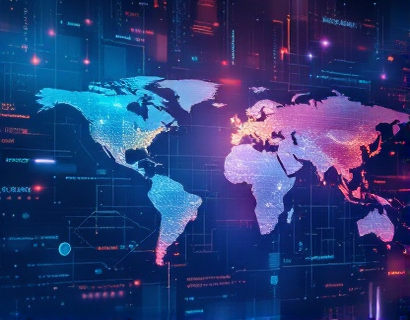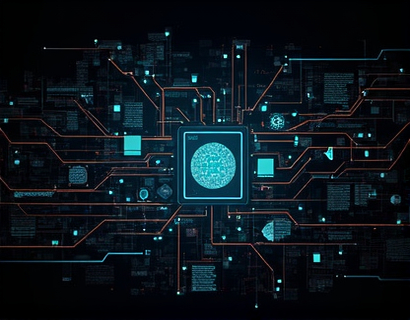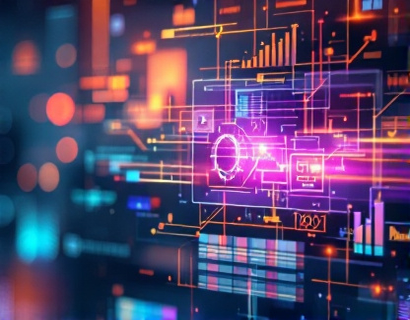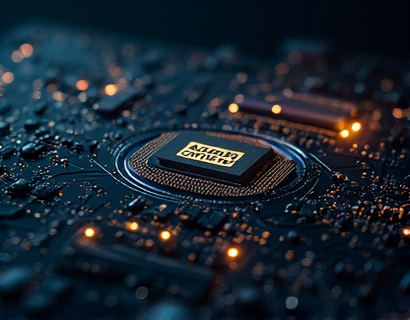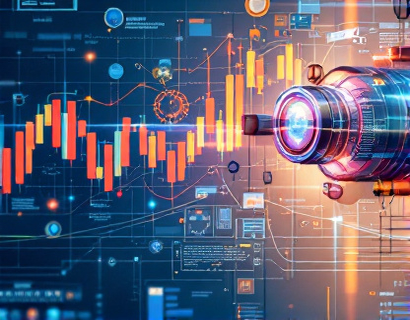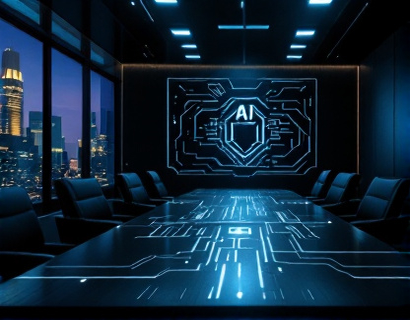Unlocking Digital Innovation: Leveraging Crypto and AI for Next-Gen Solutions
The digital landscape is undergoing a profound transformation, driven by the convergence of two revolutionary technologies: cryptocurrency and artificial intelligence (AI). This convergence is not just a trend but a fundamental shift in how we approach digital innovation. By merging these technologies, we can create advanced applications that enhance user experiences, streamline processes, and open up new possibilities for businesses and individuals alike. This article delves into the transformative power of combining cryptocurrency and AI, exploring how these technologies can be leveraged to redefine the future of digital solutions.
The Intersection of Cryptocurrency and AI
Cryptocurrency, since its inception with Bitcoin, has been more than just a digital currency. It represents a decentralized, secure, and transparent way of conducting transactions. AI, on the other hand, is revolutionizing industries by enabling machines to learn from data, adapt to new inputs, and perform tasks that traditionally required human intervention. When these two technologies intersect, the potential for innovation becomes immense.
The integration of AI into blockchain technology, the underlying infrastructure of cryptocurrency, can enhance the efficiency, security, and functionality of blockchain-based systems. For instance, AI can be used to optimize blockchain networks by predicting and managing network congestion, improving transaction processing speeds, and enhancing security measures against potential threats. Conversely, the transparency and immutability of blockchain can provide AI systems with a robust and trustworthy environment for data storage and processing.
Enhancing User Experiences with AI-Driven Crypto Applications
One of the most exciting applications of combining cryptocurrency and AI is in the development of user-centric crypto applications. These applications can leverage AI to provide personalized experiences, predictive insights, and automated services that cater to individual user needs. For example, AI-powered crypto wallets can analyze market trends, provide real-time alerts, and suggest optimal trading strategies based on a user's risk profile and investment goals.
Moreover, AI can enhance the security of crypto applications by detecting and mitigating fraudulent activities in real-time. Machine learning algorithms can identify patterns indicative of fraudulent behavior, such as unusual transaction volumes or access from unknown locations, and trigger security protocols to protect user assets. This not only builds trust but also ensures a safer and more reliable user experience.
Smart Contracts and AI: A Powerful Combination
Smart contracts, self-executing contracts with the terms directly written into code, are a cornerstone of blockchain technology. When combined with AI, smart contracts can become even more powerful and versatile. AI can be used to dynamically adjust the parameters of smart contracts based on real-time data, making them more adaptive and responsive to changing conditions.
For instance, in the realm of supply chain management, AI-driven smart contracts can automatically execute transactions based on predefined conditions such as delivery times, quality checks, and payment terms. This not only streamlines processes but also reduces the need for intermediaries, lowering costs and increasing efficiency. The integration of AI ensures that smart contracts are not just static agreements but dynamic tools that can evolve with the needs of the business.
Decentralized Finance (DeFi) and AI: Revolutionizing Financial Services
Decentralized Finance (DeFi) is a rapidly growing sector that leverages blockchain technology to create financial services without traditional intermediaries. AI can significantly enhance DeFi platforms by providing advanced analytics, risk assessment, and automated trading capabilities. AI algorithms can analyze vast amounts of financial data to identify trends, predict market movements, and optimize investment strategies.
Furthermore, AI can help in creating more inclusive financial systems by reducing barriers to entry. For example, AI-driven KYC (Know Your Customer) solutions can simplify the identity verification process, making it faster and more accessible for users in underserved regions. This democratization of financial services has the potential to empower millions of people worldwide, fostering economic growth and financial inclusion.
AI in Cryptocurrency Market Analysis
The cryptocurrency market is known for its volatility and complexity. AI can play a crucial role in demystifying this market by providing sophisticated analysis tools. AI algorithms can process and analyze vast amounts of data, including historical price data, news sentiment, social media trends, and macroeconomic indicators, to generate actionable insights.
These insights can help traders and investors make more informed decisions, identify potential opportunities, and mitigate risks. AI-powered trading bots can execute trades based on predefined strategies, 24/7, without emotional bias. This not only enhances the efficiency of trading but also opens up opportunities for retail investors who may not have the expertise or resources to navigate the market manually.
Building Trust with AI and Blockchain
Trust is a critical factor in the adoption of new technologies. The combination of AI and blockchain can significantly enhance trust in digital systems. Blockchain's immutable and transparent nature ensures that data cannot be altered or tampered with, while AI can provide advanced verification and validation mechanisms.
For instance, AI can be used to monitor blockchain networks for anomalies and potential security breaches, ensuring the integrity of the system. Additionally, AI can help in creating more transparent and accountable AI models by explaining their decision-making processes, thereby building trust among users. This synergy between AI and blockchain can lead to the development of highly trustworthy digital platforms that users can rely on.
Challenges and Considerations
While the potential of combining cryptocurrency and AI is vast, there are several challenges and considerations that need to be addressed. One of the primary concerns is the regulatory landscape. The intersection of crypto and AI operates in a relatively uncharted legal territory, and navigating the regulatory requirements can be complex. It is essential for developers and businesses to stay informed about regulatory changes and ensure compliance to avoid legal issues.
Another challenge is the technical complexity involved in integrating AI with blockchain systems. Developing robust and scalable solutions requires expertise in both domains. Collaboration between AI researchers, blockchain developers, and industry experts is crucial to overcome these technical hurdles. Additionally, ensuring the privacy and security of user data is paramount, especially when dealing with sensitive financial information.
Future Prospects
The future of digital innovation through the combination of cryptocurrency and AI is bright and full of possibilities. As technology continues to advance, we can expect to see more sophisticated and user-friendly applications that leverage the strengths of both fields. The integration of AI with blockchain can lead to the development of decentralized AI models, where AI algorithms are trained and run on a blockchain network, ensuring transparency and reducing the risk of bias.
Moreover, the rise of Web3, a vision for the next generation of the internet powered by blockchain, will further accelerate the adoption of AI-driven crypto solutions. Web3 applications will benefit from AI to create more interactive, personalized, and secure user experiences. The convergence of these technologies will not only transform the digital landscape but also have a profound impact on various industries, from finance and healthcare to supply chain and entertainment.
In conclusion, the fusion of cryptocurrency and AI represents a new frontier in digital innovation. By harnessing the power of these technologies, we can create advanced applications that enhance user experiences, improve efficiency, and open up new opportunities. As we continue to explore and develop these solutions, the future of digital technology looks more promising than ever.











